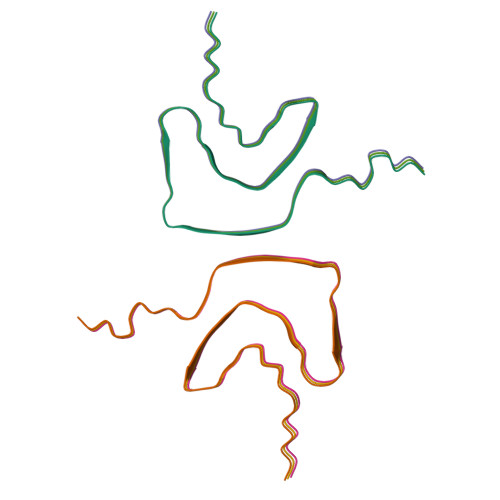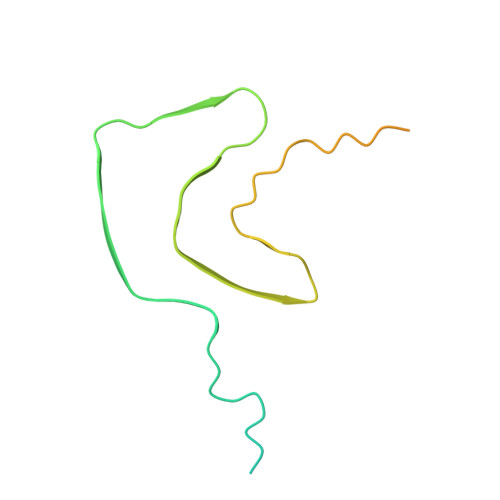Conformational Dynamics of an alpha-Synuclein Fibril upon Receptor Binding Revealed by Insensitive Nuclei Enhanced by Polarization Transfer-Based Solid-State Nuclear Magnetic Resonance and Cryo-Electron Microscopy.
Zhang, S., Li, J., Xu, Q., Xia, W., Tao, Y., Shi, C., Li, D., Xiang, S., Liu, C.(2023) J Am Chem Soc 145: 4473-4484
- PubMed: 36794997
- DOI: https://doi.org/10.1021/jacs.2c10854
- Primary Citation of Related Structures:
7YK2, 7YK8 - PubMed Abstract:
Many amyloid fibrils associated with neurodegenerative diseases consist of an ordered fibril core (FC) and disordered terminal regions (TRs). The former represents a stable scaffold, while the latter is rather active in binding with various partners. Current structural studies mainly focus on the ordered FC since the high flexibility of TRs hinders structural characterization. Here, by combining insensitive nuclei enhanced by polarization transfer-based 1 H-detected solid-state NMR and cryo-EM, we explored the intact structure of an α-syn fibril including both FC and TRs and further studied the conformational dynamics of the fibril upon binding to lymphocyte activation gene 3 (LAG3)─a cell surface receptor that is involved in α-syn fibril transmission in brains. We found that both the N- and C-TRs of α-syn are disordered in free fibrils featuring similar conformation ensembles as those in soluble monomers. While in the presence of the D1 domain of LAG3 (L3D1), the C-TR directly binds to L3D1, meanwhile the N-TR folds into a β-strand and further integrates with the FC, which leads to alteration of the overall fibril structure and surface property. Our work reveals synergistic conformational transition of the intrinsically disordered TRs of α-syn, which sheds light on mechanistic understanding of the essential role of TRs in regulating the structure and pathology of amyloid fibrils.
Organizational Affiliation:
Interdisciplinary Research Center on Biology and Chemistry, Shanghai Institute of Organic Chemistry, Chinese Academy of Sciences, Shanghai 201210, China.
















